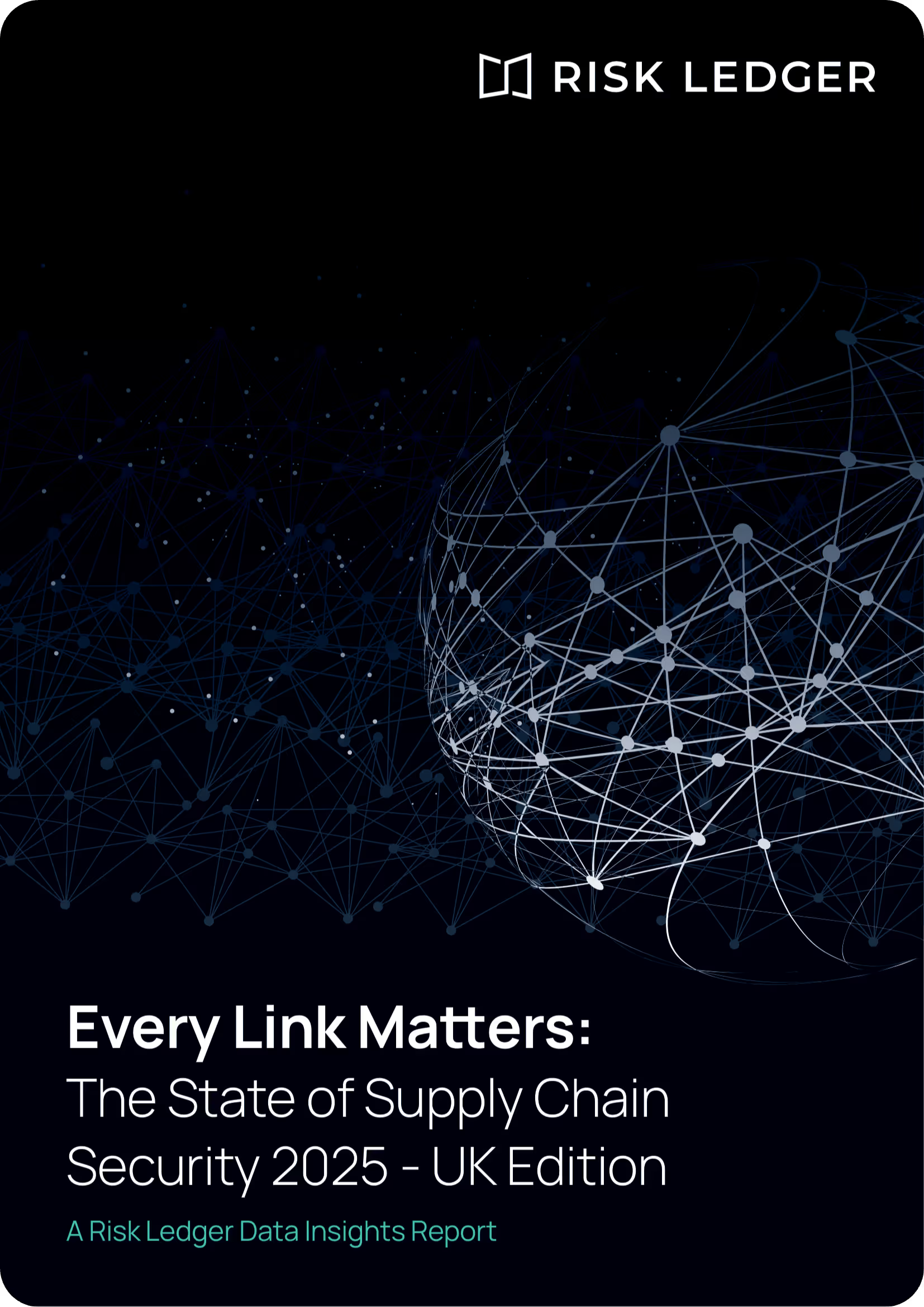
Kattava opas DORA- ja TPRM-vaatimustenmukaisuuteen
DORAn suhteen on kuitenkin edelleen monia epävarmuustekijöitä ja siitä, kuka tarkalleen kuuluu sen soveltamisalaan? Ja mikä tärkeintä, miten toteuttaa sen vaatimukset, jotka vaikuttavat kolmansien osapuolten riskinhallintaan ja häiriötilanteisiin reagointiohjelmiin. Siinä operatiivisten riskien oppaamme lataus on täällä auttamassa.Olemme työskennelleet toimittamaan sinulle tämän DORA-vaatimustenmukaisuusoppaan, jotta sinulla on kaikki mitä tarvitset vastataksesi kaikkiin DORA-kysymyksiin ja varmistaaksesi, että tiedät mitä tehdä.
From silod, reactive TPRM to active supply chain defence.
With supply chain attacks accelerating and their impacts increasing, one thing is clear: Traditional Third-Party Risk Management is failing, leaving organisations exposed. A new approach is needed, one of collective defence.
Gain exclusive data and actionable strategies in our data insights report based on a survey of 500 leading UK cyber security professionals and find out:
Why supply chain cyber incidents are a top three concern for 90% of UK professionals in 2025.
What the biggest shortcomings with traditional TPRM are, according to your peers.
How a collective defence model can be a game changer, and how it successfully uncovered hundreds of potential concentration risks for organisations in the UK public and financial sectors.
Tämä opas sisältää kaiken siitä, miksi sinun pitäisi välittää, DORAn keskeisiin pilareihin ja siihen, mitkä EU:n ulkopuoliset organisaatiot kuuluvat sen toimivaltaan.
DORA painottaa merkittävästi ICT-kolmansien osapuolten riskienhallintaa. Tässä valkoisessa kirjassa esitellään kaikki, mitä sinun tarvitsee tietää siitä, miten DORA vaikuttaa TPRM: ään.
Tämä asiakirja tarjoaa etenemissuunnitelman, joka muuntaa sääntelykielen erityisiksi, toteuttamiskelpoisiksi vaiheiksi. Annamme sinulle hyödyllisen yhteenvedon jokaisesta teknisestä sääntelystandardista.
What you will learn:
Incremental tweaks won't fix systemic flaws. You need to transcend the siloed, static approach and adopt a strategy of collective defence.
In the report, you will get a clear picture on:
🕸️ Why “Point-in-Time” Is No Longer Enough
Learn how static assessments and periodic audits leave you exposed in a fast-moving world, and how continuous monitoring and intelligent triggers must take their place.
🕸️ How to Rewire Your Risk Lens
Get the blueprint for shifting from siloed assurance to holistic oversight. See how linking teams, technology, and data gives you visibility across every contract, service, and dependency.
🕸️ The “Defend-as-One” Approach
Learn why supply chain security is a human problem, not just a technical one. Real resilience requires organisations and suppliers to work together, sharing visibility and intelligence. By creating a connected community where organisations and their industry peers collaborate to reduce systemic risk, they can Defend-as-One.
Why this matters now:
- Because supply chain blind spots can become catastrophes — the fallout from one vendor breach can cascade across an entire industry.
- Because efficiency matters — duplicated reviews, misaligned incentives, and scattered data waste resources.
- Because resilience is the new benchmark — the firms that break through TPRM’s limitations will be the ones prepared for tomorrow’s surprises.
Why you should download this report
- Stop putting band-aids on a broken system. Understand exactly how traditional models are failing.
- Make risk data usable — move from raw responses and silos into connected insight.
- Bridge gaps across teams and suppliers — so everyone sees, acts, and learns together.
Lead your industry, don’t follow it — be the organisation others turn to when things get complex.





